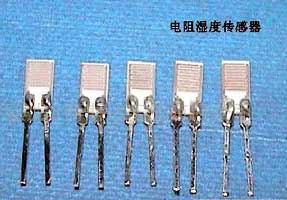What is a resistive sensor?
A resistive sensor is a device that converts measured physical quantities such as displacement, deformation, force, acceleration, humidity, temperature, etc. into resistance values.
Resistive sensor device. There are mainly resistive strain sensors such as resistance strain type, piezoresistive type, thermal resistance, heat sensitive, gas sensitive and humidity sensitive. The strain gauge in the sensor has a strain effect of the metal, that is, mechanical deformation under the action of an external force, so that the resistance value changes accordingly. There are two types of resistance strain gauges: metal and semiconductor. Metal strain gauges are available in wire, foil and film. Semiconductor strain gauges have the advantages of high sensitivity (usually dozens of times of silk and foil) and small lateral effects.
Piezoresistive sensors are devices that are fabricated by diffusion resistance on a substrate of a semiconductor material in accordance with the piezoresistive effect of the semiconductor material. The substrate can be directly used as a measuring sensor element, and the diffusion resistor is connected in the form of a bridge in the substrate. When the substrate is deformed by an external force, the resistance values will change, and the bridge will produce a corresponding unbalanced output. The substrate (or diaphragm) material used as a piezoresistive sensor is mainly a silicon wafer and a silicon wafer. Silicon piezoresistive sensors made of silicon wafers are becoming more and more popular, especially for solid-state piezoresistive sensors that measure pressure and speed. Thermistor sensor mainly measures the temperature and temperature-related parameters by using the characteristic that the resistance value changes with temperature. This type of sensor is suitable when the temperature detection accuracy is relatively high. A wider range of thermal resistance materials are platinum, copper, nickel, and the like. They have the characteristics of large temperature coefficient of resistance, good linearity, stable performance, wide temperature range and easy processing. It is used to measure temperatures in the range of -200 ° C to 500 ° C.

Resistive sensor device. There are mainly resistive strain sensors such as resistance strain type, piezoresistive type, thermal resistance, heat sensitive, gas sensitive and humidity sensitive. The strain gauge in the sensor has a strain effect of the metal, that is, mechanical deformation under the action of an external force, so that the resistance value changes accordingly. There are two types of resistance strain gauges: metal and semiconductor. Metal strain gauges are available in wire, foil and film. Semiconductor strain gauges have the advantages of high sensitivity (usually dozens of times of silk and foil) and small lateral effects.
Piezoresistive sensors are devices that are fabricated by diffusion resistance on a substrate of a semiconductor material in accordance with the piezoresistive effect of the semiconductor material. The substrate can be directly used as a measuring sensor element, and the diffusion resistor is connected in the form of a bridge in the substrate. When the substrate is deformed by an external force, the resistance values will change, and the bridge will produce a corresponding unbalanced output. The substrate (or diaphragm) material used as a piezoresistive sensor is mainly a silicon wafer and a silicon wafer. Silicon piezoresistive sensors made of silicon wafers are becoming more and more popular, especially for solid-state piezoresistive sensors that measure pressure and speed. Thermistor sensor mainly measures the temperature and temperature-related parameters by using the characteristic that the resistance value changes with temperature. This type of sensor is suitable when the temperature detection accuracy is relatively high. A wider range of thermal resistance materials are platinum, copper, nickel, and the like. They have the characteristics of large temperature coefficient of resistance, good linearity, stable performance, wide temperature range and easy processing. It is used to measure temperatures in the range of -200 ° C to 500 ° C.






